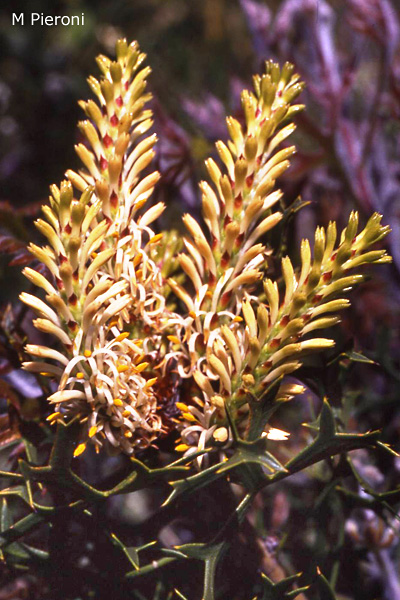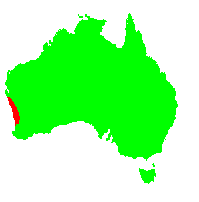General Description:
Petrophile is a genus of around 40 species, all occurring only in Australia. They are found in the southern half of the continent in temperate regions. Most are small to medium sized shrubs having flower clusters arranged in elongated or globular heads. The fruits are also elongated or globular in shape and the appearance of the fruits gives rise to the common name of “conebushes” or “coneflowers”. The genus is closely related to Isopogon.
Petrophile macrostachya is a small shrub up to about 1.5 metres high but often smaller. The leaves are about 70 mm long and divided into thick, linear segments. The small flowers are cream in colour and elongated clusters at the ends of the branches and from the upper leaf axils. Flowering occurs in spring. The fruit is an elongated cone containing numerous seeds protected by woody bracts. The fruits remain on the plant for an indefinite period and only release the seeds after a fire or the death of the plant.
Petrophiles are not often cultivated but P.macrostachya would make an attractive addition to a native garden. It is not often cultivated, however, and like many western species it is not really suited to humid climates. It would perform best in areas with dry summers and well drained soils. A sunny or lightly shaded position will produce the best flowering. It will withstand light to moderate frosts.
Propagation from seed is relatively easy and no pretreatment is necessary. Cuttings on firm, current season’s growth are also likely to be successful but may be slow to strike.

Petrophile macrostachya
Photo: Margaret Pieroni
 Australian Native Plants Society (Australia)
Australian Native Plants Society (Australia)